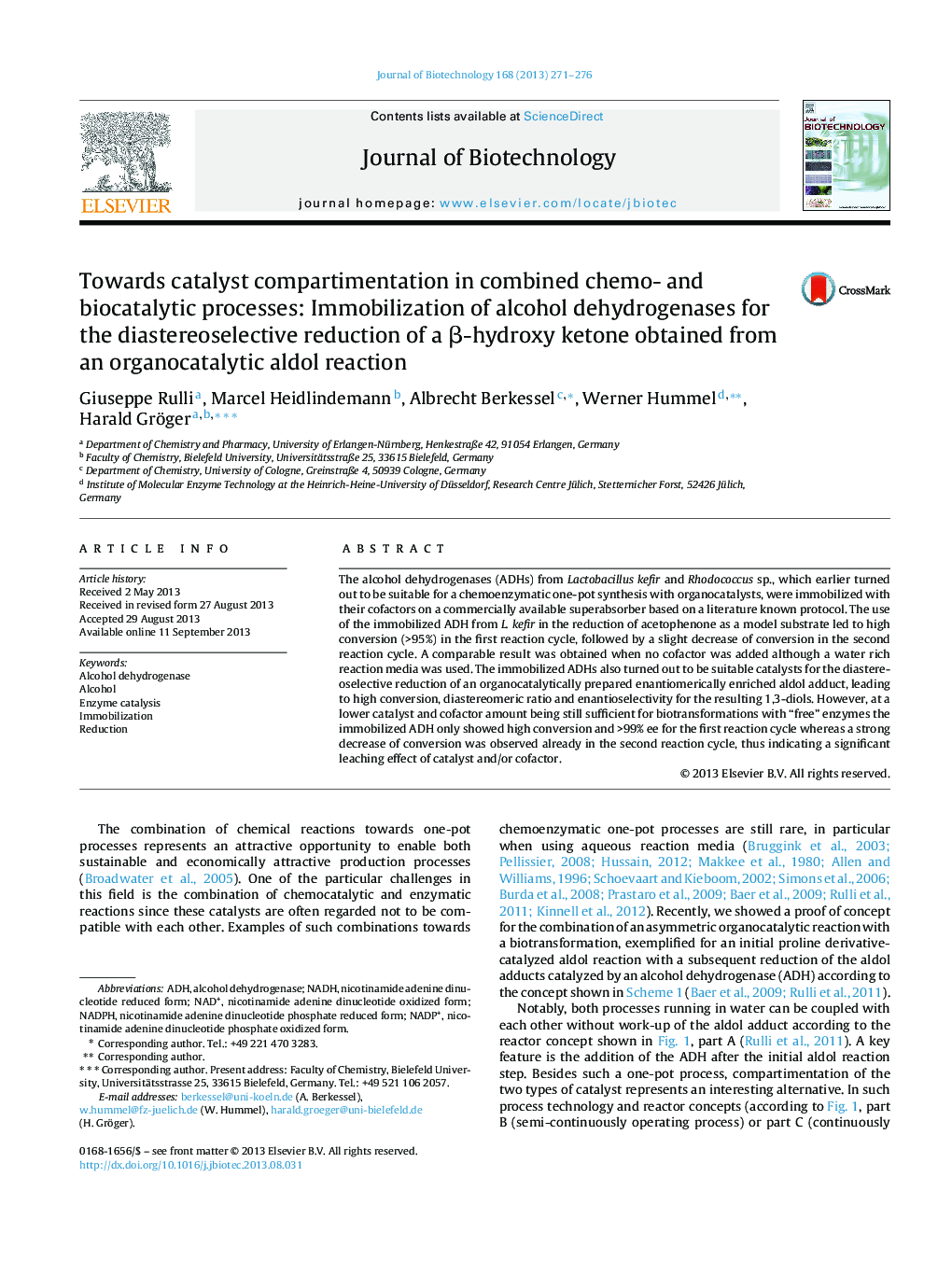| کد مقاله | کد نشریه | سال انتشار | مقاله انگلیسی | نسخه تمام متن |
|---|---|---|---|---|
| 23482 | 43441 | 2013 | 6 صفحه PDF | دانلود رایگان |

• ADHs from Lactobacillus kefir and Rhodococcus sp., respectively, were immobilized with their cofactors on a superabsorber based on a literature-known method.
• Applying the immobilized ADH from L. kefir in the reduction of acetophenone as a model substrate led to high conversion (>95%).
• Immobilized ADHs are suitable catalysts for the diastereoselective reduction of an organocatalytically prepared enantiomerically enriched aldol adduct.
• At a lower catalyst and cofactor amount being still sufficient for biotransformations with “free” enzymes the immobilized ADH only showed high conversion and >99% ee for the first reaction cycle.
The alcohol dehydrogenases (ADHs) from Lactobacillus kefir and Rhodococcus sp., which earlier turned out to be suitable for a chemoenzymatic one-pot synthesis with organocatalysts, were immobilized with their cofactors on a commercially available superabsorber based on a literature known protocol. The use of the immobilized ADH from L. kefir in the reduction of acetophenone as a model substrate led to high conversion (>95%) in the first reaction cycle, followed by a slight decrease of conversion in the second reaction cycle. A comparable result was obtained when no cofactor was added although a water rich reaction media was used. The immobilized ADHs also turned out to be suitable catalysts for the diastereoselective reduction of an organocatalytically prepared enantiomerically enriched aldol adduct, leading to high conversion, diastereomeric ratio and enantioselectivity for the resulting 1,3-diols. However, at a lower catalyst and cofactor amount being still sufficient for biotransformations with “free” enzymes the immobilized ADH only showed high conversion and >99% ee for the first reaction cycle whereas a strong decrease of conversion was observed already in the second reaction cycle, thus indicating a significant leaching effect of catalyst and/or cofactor.
Figure optionsDownload as PowerPoint slide
Journal: Journal of Biotechnology - Volume 168, Issue 3, November 2013, Pages 271–276